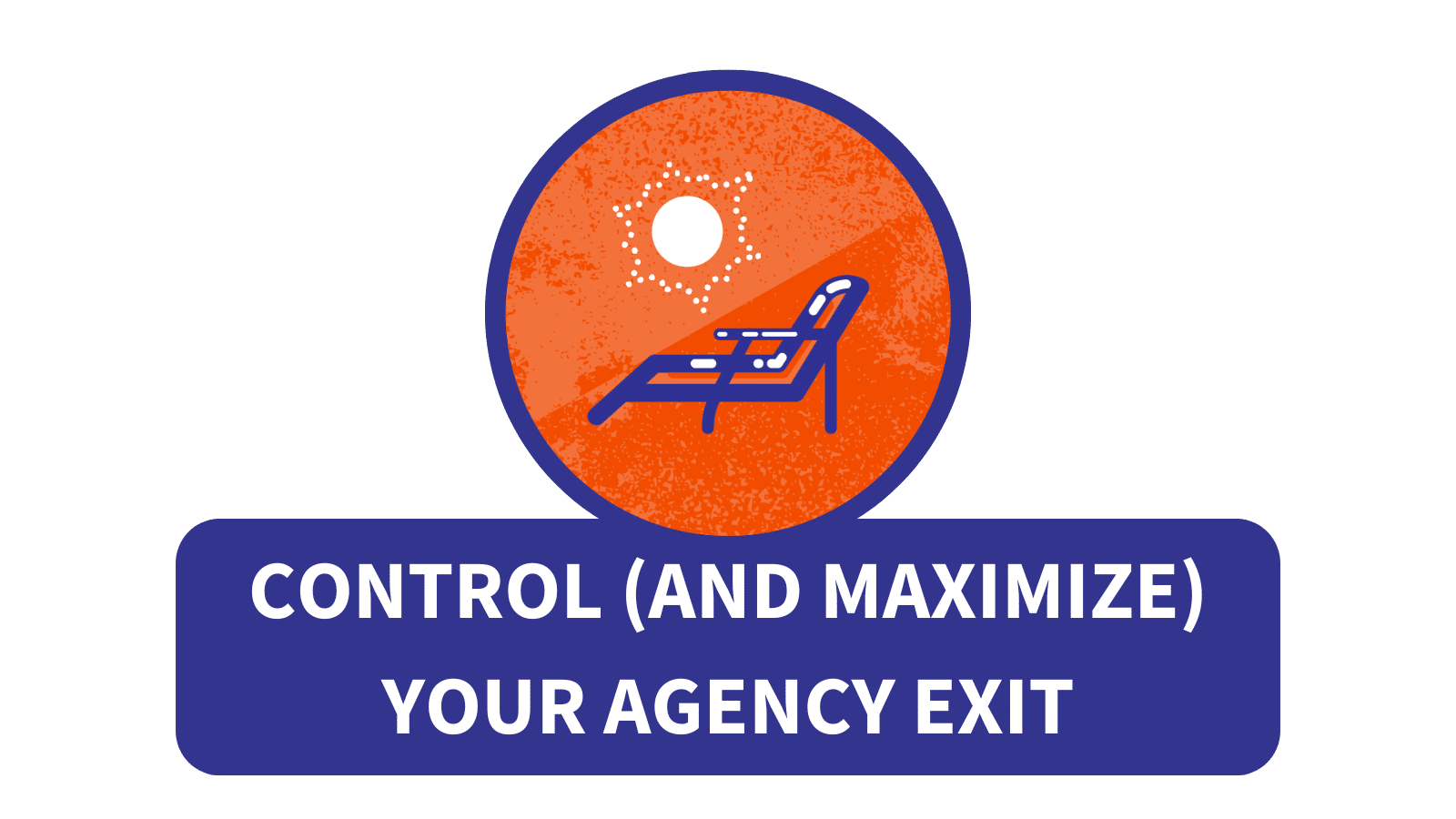Want to attract your ideal acquirer? Be sure your agency’s business model—including your services and your client base—aligns to the ideal acquirer’s persona. That includes aligning to their unique Values, Goals, and Resources (VGR).
If you want to sell, tailor your agency to attract acquirers—but don’t lose yourself along the way.
Preparing for his agency’s strategic planning retreat, an Equity-oriented agency owner asked me for M&A advice:
“For getting acquired, do you see more value in an agency that has (1) broader client roster and mastery in a single service (more, but smaller retainers), or (2) a targeted industry portfolio and more, tailored capabilities (fewer, but larger retainers)?”
My answer? Either strategy can work—the right answer depends on what your eventual acquirer values. Personally, my specialist-agency clients tend to be more profitable and less stressed. But you need to go with what’s right for you and your goals. In this article, I’ll walk through helping you make—or move toward—a decision.
Note: If you’re committed to running a Lifestyle-oriented agency—and never want to sell—this article will be less relevant. But you might enjoy exploring a path-not-taken… or keep you options open.
Understand your ideal acquirer’s “persona” first
Start by understanding the ideal acquirer’s persona. To generalize, there are three types of agency acquirers:
- OPTION A: Quantity-motivated acquirers (aka revenue-oriented) would likely prefer a higher client count (and a broader range of clients). Quantity-oriented acquirers want volume and, to a point, don’t care how they get there. This includes agencies that are growing their revenue to later get acquired themselves. Those often focus on a “revenue multiple” rather than a multiple of earnings.
- OPTION B: Quality-motivated acquirers (aka profit-oriented) would likely prefer a lower client count (with larger clients in a narrower niche). Quality-oriented acquirers recognize that it’s easier to attract high-quality clients with a tightly-honed positioning. They’re often evaluating prospects based on an EBITDA multiple (that is, to pay a multiple of earnings).
- OPTION C: Strategic acquirers (aka intangible-oriented) wants something about your agency that’s not conveyed in numbers alone. This might include particular industry expertise, a tight-knit team, or something else beyond revenue or profits. From a metrics perspective, a strategic acquirer may “over-pay” for your agency, relative to the EBITDA multiple.
Why does this matter? When you understand what motivates your acquirer, you can better craft a deal that meets your needs. This helps whether you pursue win/win or “start with no.”
What motivates your agency’s future ideal acquirer
Digging deeper, here are nine angles to consider about potential acquirers:
- If the acquirer focuses on a specific niche already (or want to add your niche to their expertise), they’ll likely want clients focused on one niche.
- If the acquirer wants to cross-sell their complementary-to-you services, they’d likely prefer less focus. That’s especially true if a niche client base would create conflicts (and thus they’d have to fire / refer-away many of your clients).
- If the acquirer isn’t good at (or doesn’t care about) client retention, they’ll likely expect to lose some of your clients. In that case, more-yet-small-clients would be better diversified.
- If the acquirer follows my advice on ideal client count, they’d be targeting 10-20 active clients; big clients would be more useful.
- If the acquirer is about quantity over quality, they’d prefer the “lots of clients” model, because they believe “more clients = more profits” (which is only sometimes true).
- If the acquirer wants to “bulk up” (that is, add revenue to become more attractive to future acquirers), they probably wouldn’t care either much either way. Why? Their goal is to add revenue, and they’re not being [too] picky about the quality of the revenue.
- If the acquirer wants to quickly add new services via a “bolt on” acquisition, they’d be more interested in a personnel “lift out” (to get the skillset) instead of your current client base. Of course, there’s no guarantee that employees would stick around, without special incentives.
- If the acquirer is trying to add “logos” to their own portfolio, they might not care about the client size; they just want the logos.
- If you ultimately aren’t successful in negotiating an exit that meets your goals, which business strategy will have been most enjoyable for you and your team to execute?
Don’t get blinded to the money! A hypothetical offer doesn’t mean they’ll move forward—and a Letter of Intent (LOI) isn’t binding, either. Speaking of money…
Be careful about focusing solely on the money
As a starting point for this situation, identify the type(s) of acquirer that are most appealing. Understanding the persona(s) of your ideal acquirer(s) will help you assess what would be most appealing to them. Be sure to read my article on getting acquired; it includes a list of 10+ types of firms that might want to acquire your agency.
Example: Culture Clash vs. Culture Match
For instance, I helped a client prepare to sell his niched-on-services agency several years ago. The eventual acquirer offered a strong price… but there was significant culture clash (a “sales first” culture acquiring a “strategy first” culture). He didn’t enjoy working at the acquirer during the earnout period.
In contrast, I helped another client negotiating selling to a culture-matched acquirer. My former client stayed at the acquirer for 5+ years—longer than the mandatory buyout period—because she liked working there (especially now that she didn’t have the pressure of being the sole owner).
Remember that you might NOT sell
Many agencies never sell, even if the owner wants to. Why? They may not be appealing to buyers, the seller wants more than acquirers think the agency is worth, the seller wants terms that the buyer won’t accept (or vice versa), or the agency has committed to a shrinking market.
Based on this, don’t make changes solely to exit. Recently, an agency owner asked me if they should ignore profit margins to help them grow top-line revenue, to become more attractive to revenue-oriented acquirers. That sounded like a bad idea—if they can’t sell the agency, they also won’t have gotten profits along the way.
Not all buyers are serious
If someone approaches you about buying, that doesn’t mean they’re serious. For some, saying they’re acquiring agencies makes them feel powerful… but that doesn’t mean they have financing to do it… or that they’ll buy your specific agency. More on this in a future article, about what to do if someone approaches you “cold” with an acquisition offer. As they say in sales, “buyers are liars.”
It’s OK to be excited about acquirer interest, especially if you’re getting tired of the daily grind of running an agency. But be cautious—you still need to secure a good deal, even if you’re in a hurry to exit. Unless you’ve explicitly committed to a “fire sale” deal, don’t hurry so fast that you lose what you’ve invested time and money to build.
Question: Which agency business model—narrow services and broad client base, or niched base of larger clients—would help you attract your ideal acquirer?


